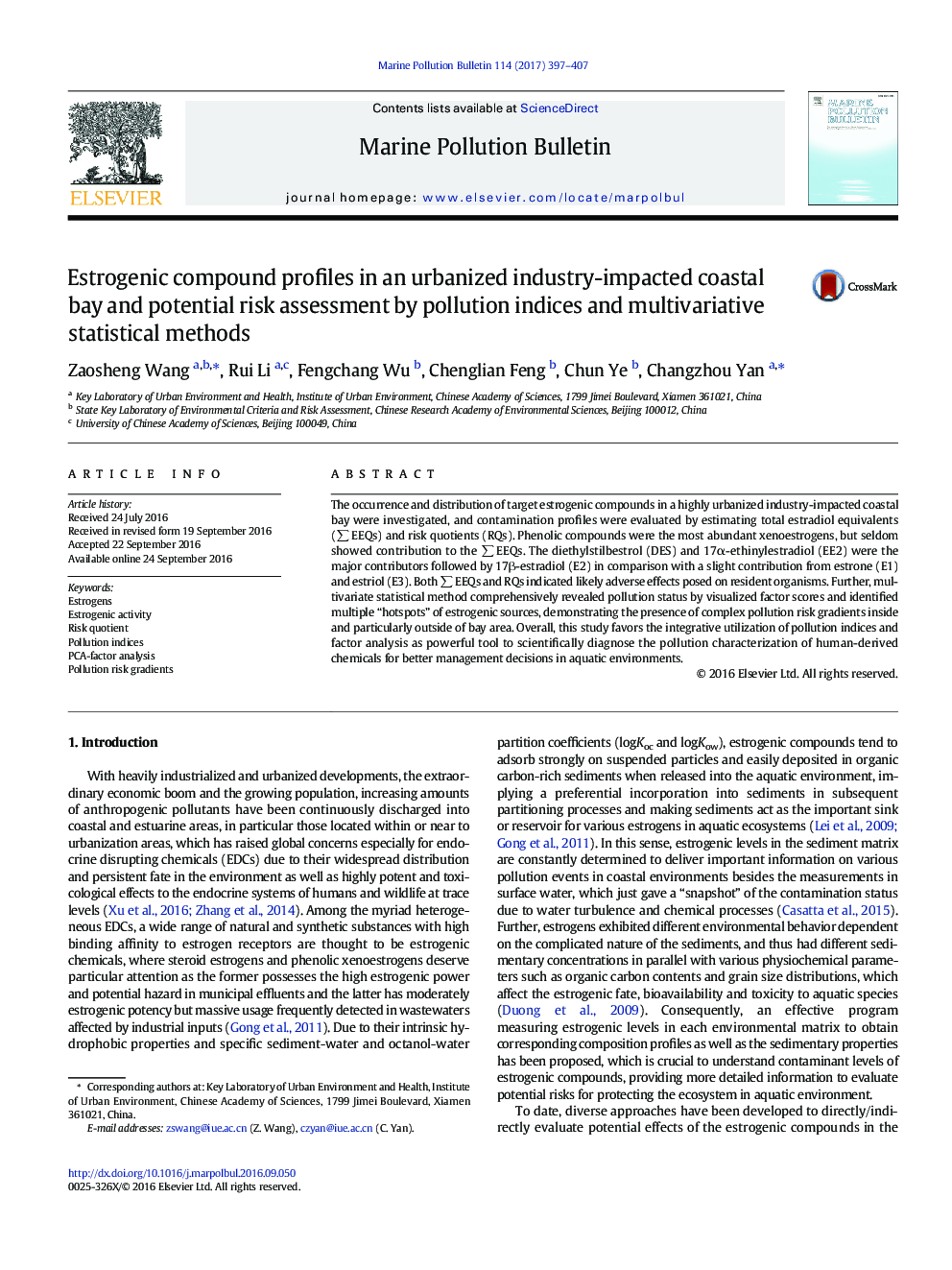| Article ID | Journal | Published Year | Pages | File Type |
|---|---|---|---|---|
| 5757803 | Marine Pollution Bulletin | 2017 | 11 Pages |
â¢Estrogenic compounds in a coastal bay were investigated and potential risks were assessed.â¢Non-steroidal xenoestrogens were determined as the main composition profiles.â¢Synthetic steroidal estrogens (DES, EE2) contributed mostly to â EEQs followed by E2.â¢PCA-factor confirmed the existence of complex estrogenic pollution-risk gradients.â¢Integrative method comprehensively characterizes pollution status as a powerful tool.
The occurrence and distribution of target estrogenic compounds in a highly urbanized industry-impacted coastal bay were investigated, and contamination profiles were evaluated by estimating total estradiol equivalents (â EEQs) and risk quotients (RQs). Phenolic compounds were the most abundant xenoestrogens, but seldom showed contribution to the â EEQs. The diethylstilbestrol (DES) and 17α-ethinylestradiol (EE2) were the major contributors followed by 17β-estradiol (E2) in comparison with a slight contribution from estrone (E1) and estriol (E3). Both â EEQs and RQs indicated likely adverse effects posed on resident organisms. Further, multivariate statistical method comprehensively revealed pollution status by visualized factor scores and identified multiple “hotspots” of estrogenic sources, demonstrating the presence of complex pollution risk gradients inside and particularly outside of bay area. Overall, this study favors the integrative utilization of pollution indices and factor analysis as powerful tool to scientifically diagnose the pollution characterization of human-derived chemicals for better management decisions in aquatic environments.
Graphical abstractDownload high-res image (258KB)Download full-size image
